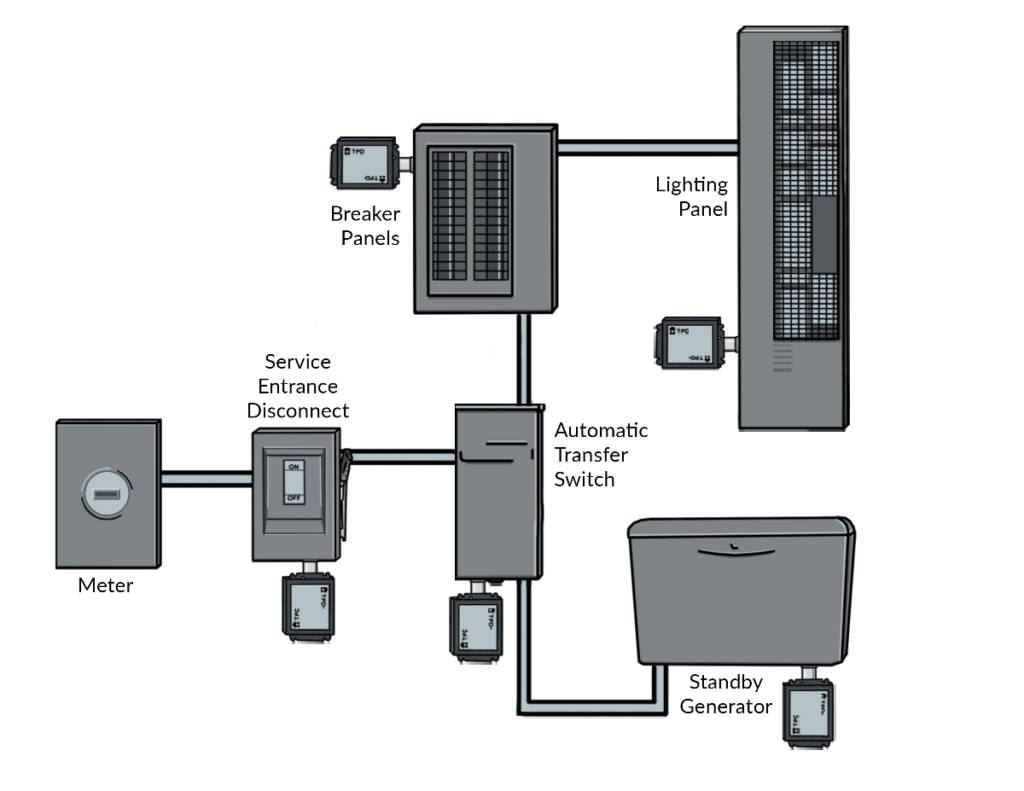
Tips and technical advice from Kevin Jozefowicz, Strateres Inside Sales and Support
Homes using a backup generator can be at risk of damage from dirty power as well as from transients generated by the Automatic Transfer Switch used to switch from the grid to the generator.
Understanding the Risk
Transfer surges often occur during the switch-over from utility power to generator power and vice versa. These surges are not just simple power fluctuations; they are potent enough to damage lighting systems and other electronics. Surprisingly, many homeowners and even some systems integrators overlook this risk, assuming that generator power means safe power. The reality is, however, that an ATS can generate switching transients similar to those of utility power, posing a significant threat to downstream equipment, including your high-end lighting systems.
The Need for a Dual-Protection Approach
To mitigate these risks, a dual-protection strategy is essential:
- At the Lighting Panel: Installing surge protection directly at the lighting panel is a fundamental step. This protects the lighting system from surges originating within the home, ensuring the longevity and reliability of the installation.
- Staged Protection for ATS and Utility Surges: Given the potential for surges during power transitions, it’s crucial to have a staged approach:
- Stage 1: Place surge protection upstream of the ATS to guard against surges originating from the utility or during the transfer process.
- Stage 2: Implement additional surge protection downstream of the ATS. This ensures that any transients generated during the switchover are effectively mitigated before reaching the lighting system.
The Cost of Complacency
Neglecting these protection measures can lead to significant damage. The cost of repairing or replacing a high-end lighting system due to surge damage can be substantial, not to mention the inconvenience and potential safety hazards. Therefore, investing in adequate surge protection is not just a precaution; it’s an essential component of a well-designed lighting system in custom homes.
Conclusion
As a systems integrator or a homeowner, understanding the importance of protecting your lighting systems from transfer surges is key. Implementing a robust protection strategy will ensure that your lighting systems, a central feature of your home’s aesthetics and functionality, are safeguarded against all types of electrical surges, including those from ATS transitions. Remember, it’s not just about installing a lighting system; it’s about ensuring its longevity and performance in the face of electrical uncertainties.
